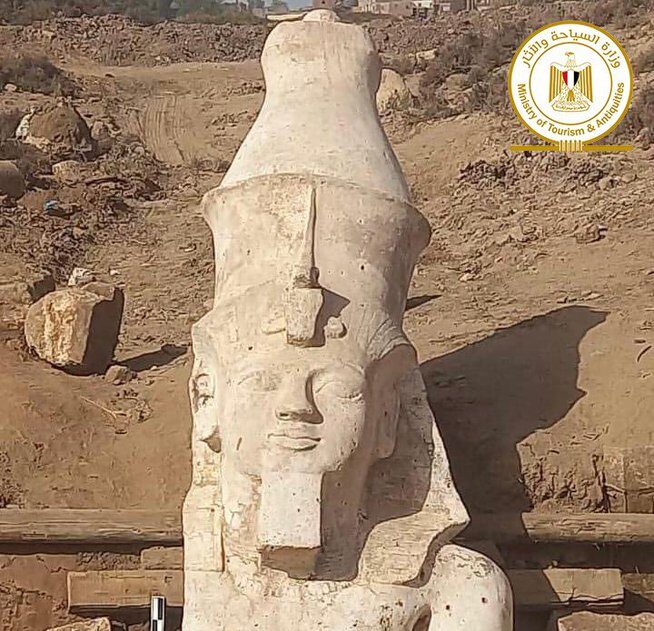Egyptian and American archeologists recently uncovered an upper half of a colossal statue of pharaoh Ramses II. The discovery was made during excavations in the Ashmunin region, an area that includes the ancient city of Hermopolis.
The team, led by Yvona Trnka-Amrhein, an assistant professor of classics at the University of Colorado Boulder, and archaeologist Basem Gehad of the Egyptian Ministry of Tourism and Antiquities, conducted an archeological study on the part of the statue and concluded it matches the lower half of a statue discovered by German archaeologist Gunther Roeder in 1930.
Officials labeled it a significant discovery, as it stresses the importance of the site and indicates “more archaeological discoveries during the coming period”.
The upper half of the statue is 12.4 feet tall and depicts Ramses II in a sitting position while wearing a double crown and a headdress topped with a royal cobra, according to a statement made by the Ministry of Tourism and Antiquities. On the back, there are hieroglyphic writings that include the titles of Ramses II as part of the glorification of the pharaoh. The experts estimate that the entire statue could be 23 feet tall when put together.
Archeologists will now clean the upper half of the statue and examine it further before making a visualization of what the entire statue looked like in its original state.

